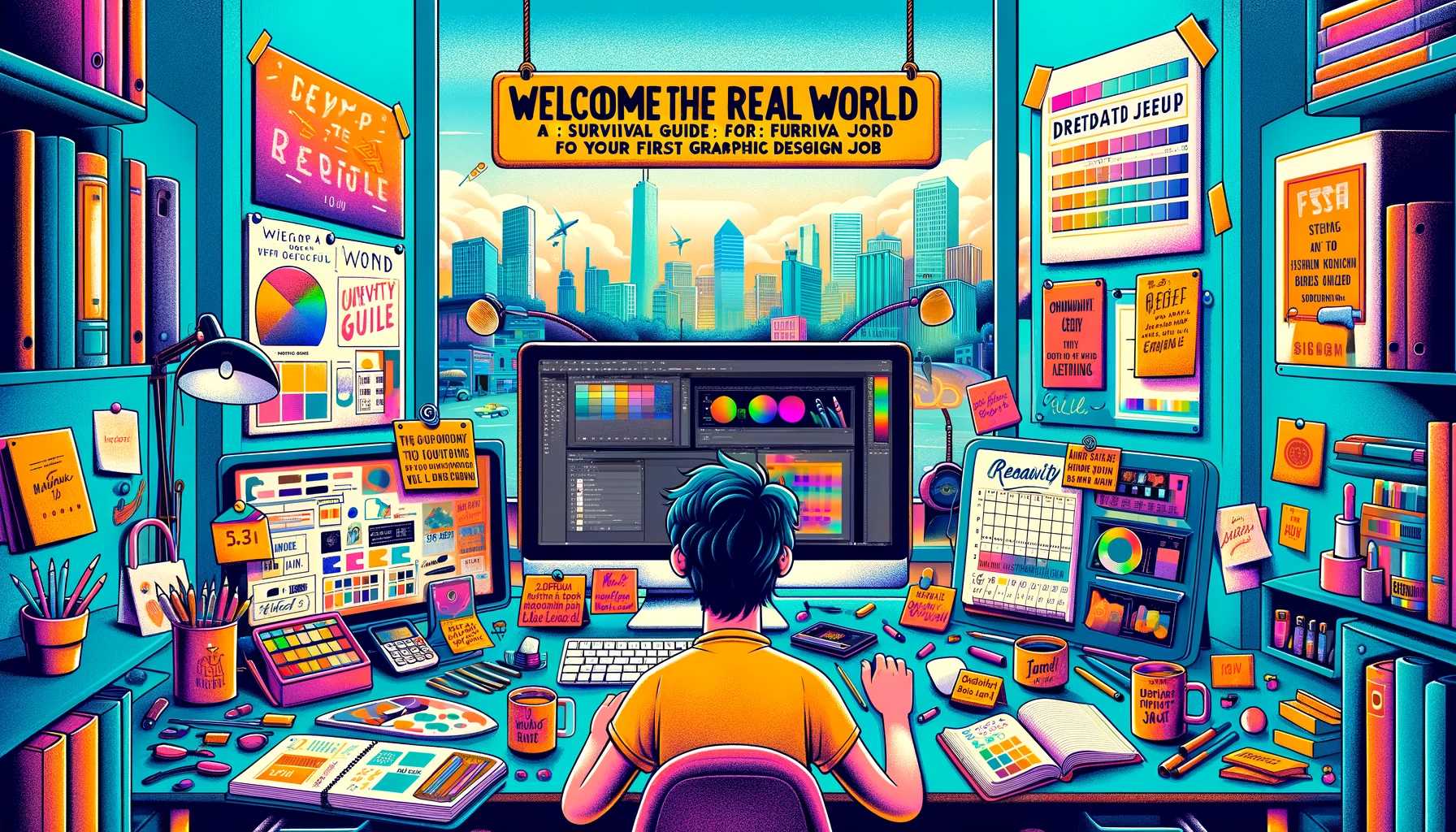Welcome to the Real World: A Survival Guide for Your First Graphic Design Job
Congratulations! You've landed your first graphic design job – a thrilling moment that marks the beginning of an exciting career journey. But amidst the celebration, a healthy dose of nervousness is natural. What to expect? How to navigate the professional design world? Fear not, aspiring creative! This guide will equip you with the knowledge and tools to thrive in your first graphic design role.
First Impressions: Stepping into the Design Studio
Your first day will likely be a whirlwind of introductions, paperwork, and familiarization with your new environment. Here's what you can expect:
- Meet the Team: Get to know your colleagues, especially your direct supervisor, art director, or team lead. They'll guide you through your onboarding process and answer any initial questions you might have.
- Tech Talk: You'll likely be introduced to the design software used by the company. Familiarize yourself with these programs, and don't hesitate to ask for help if needed.
- Understanding the Workflow: Learn about the design process followed by the company. This might involve brainstorming sessions, client presentations, revision cycles, and final handoff procedures.
Project Initiation: From Brief to Brainstorm
The real fun begins! Here's how design projects typically kick off:
- The Creative Brief: This document outlines the project's objectives, target audience, brand guidelines, and deliverables (final outputs). Read it thoroughly and ask clarifying questions to fully grasp the project's scope.
- Brainstorming Bonanza: This is where ideas take flight! Participate actively in brainstorming sessions, even if you feel your ideas aren't fully formed. Collaboration is key, and sometimes the simplest suggestions can spark brilliant concepts.
- Concept Development: Based on the chosen direction, you'll start developing your design concepts. Sketching by hand is a great way to explore ideas before jumping into digital tools.
Design in Action: From Mockups to Revisions
Now comes the magic of turning concepts into reality:
- Mockup Magic: Use your design software to create mockups, which are visual representations of your design ideas. Focus on clarity, user experience (UX), and brand consistency.
- Client Presentations: Prepare to showcase your design concepts to the client and your team. Be clear, concise, and articulate your design decisions based on the project brief.
- Revisions are the Norm, Not the Exception: Be prepared for feedback and revisions. Approach them with an open mind and a willingness to improve your designs.
Beyond Design: The Unsung Skills of a Graphic Designer
Graphic design is more than just creating visually appealing graphics. Here are some additional skills you'll need to hone:
- Communication is Key: Effective communication with clients, colleagues, and other stakeholders is crucial. Clearly articulate your design decisions and actively listen to feedback.
- Time Management Master: Juggling multiple projects with tight deadlines is a reality in the design world. Develop strong time management skills to prioritize tasks and deliver projects on time.
- Embrace Collaboration: Graphic design is often a collaborative effort. Learn to work effectively with team members, understand different perspectives, and integrate feedback seamlessly.
- The Lifelong Learner: The design industry is constantly evolving. Stay curious, keep up with design trends, and continuously learn new skills to stay ahead of the curve.
Challenges and Triumphs: Embracing the Rollercoaster Ride
Your first design job will be a mix of exhilarating highs and inevitable challenges. Here's how to navigate both:
- Feeling Overwhelmed? It's Okay: Don't be afraid to ask questions. A supportive team will help you learn and grow.
- Dealing with Creative Block?: Everyone gets stuck sometimes. Take breaks, explore design inspiration online, or discuss ideas with colleagues to reignite your creative spark.
- Celebrate Your Wins (Big and Small): Acknowledge your achievements, no matter how small. This keeps you motivated and reinforces your confidence.
Remember, You've Got This!
The transition from design school to the professional world can be daunting. But with dedication, a willingness to learn, and a positive attitude, you'll not only survive but thrive in your first graphic design job. Embrace the challenges, learn from your mistakes, and most importantly, never stop creating!
Bonus Tips:
- Build Your Network: Connect with other designers online and offline. This can be a valuable source of support, career advice, and potential job opportunities.
- Create a Strong Portfolio: Keep your portfolio updated with your best work from your first job. This will showcase your skills and growth to potential future employers.
The Future is Bright: Your Design Career Awaits
Your first graphic design job is the foundation of a promising career. As you gain experience, you can explore different design specializations like branding, user interface (UI) design, publication design, or motion graphics.
Remember, the design industry is dynamic and ever-evolving. Embrace new technologies, stay curious, and let your creativity flourish. With hard work, passion, and the lessons learned from your first design job, you'll be well on your way to becoming a successful and sought-after graphic designer.









